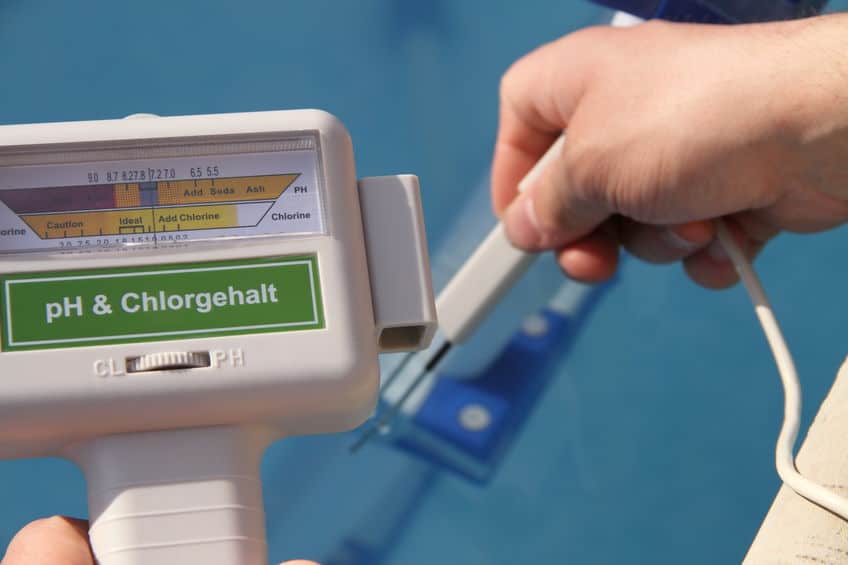With a saltwater pool, your chlorinator produces a type of chlorine that doesn’t have the strong smell that chemical chlorine has that also irritates your eyes. We also need to distinguish between chlorine that is available to sanitize the pool and chlorine that has already attached itself to contaminants and is unavailable.
What is free chlorine vs total chlorine pool water and how do you ensure your water chemistry remains in the correct range for healthy swimming?
What Is Free Chlorine vs Total Chlorine Pool Water?
Free chlorine
As the name suggests, free chlorine is what is free and available in the pool to sanitize the water.
The amount of Free chlorine in your pool should be between 2-4 parts per million (PPM).
Combined Chlorine
Combined chlorine is the amount of chlorine that has attached or bound itself to contaminants in the pool and is thus combined.
In a perfectly sanitized pool, Combined chlorine will be 0 which is the ideal amount. If the amount of Combined chlorine in your pool is 0.5 ppm or greater, you need to increase chlorine production in your pool or at least Shock your pool to lower this amount and retest.
For ideal swimming, the Combined chlorine level should ideally be under 0.2 ppm.
Total chlorine
The sum of Free Chlorine and Combined Chlorine. So it’s the total amount of chlorine in your pool. If you have a test method that only tests Total chlorine in your pool, it’s somewhat useless since you can’t tell how much is Free and how much is Combined. You really need a measurement that at a minimum tells you the level of Free chlorine in your pool.
How To Measure Chlorine Levels
There are several ways to test chlorine levels in your pool:
- Your pool chlorinator system may give a real-time chlorine reading.
- You can use salt water pool strips to measure various levels which are typically chlorine, salt, pH and more. Some test strips are better than others and have more testing abilities than cheaper ones.
- You can use an electric sensor that gets dipped into the pool for a digital reading of the chlorine level.
- You can take a water sample to your pool company (which I also do a few times per season) and ask them to do it.
I’ve used the first two options and the last one. The chlorinator reading is my favorite of the two since it’s coming from the system itself.
The strips are hit and miss… I’ve used some brands where I use one strip and get a “no chlorine” reading and then use another strip immediately and get a positive chlorine reading. When strips expire, they tend not to work well either.
I tend to visit my pool company once per month or so for a water reading but with the Hayward AquaRite system we have, water chemistry is fairly easy to maintain I find.
Conclusion
- Total Chlorine = Free Chlorine + Combined Chlorine.
- Test strips are a quick way to measure various water levels including chlorine, salt, pH, water hardness and more, depending on which brand of strip you use.
- Electric digital pool chemical readers are now available at various price points. If you’re ok with spending money up front to save on buying strips over time, it offers several advantages over strips which expire and often (in my experience) offer varying levels of accuracy.
- If you use a pool company, you can also take a water sample to them during the pool season – and some might require you to before closing – and they can advise you how your levels are.
- Want to learn more about How A Saltwater Pool Works?

